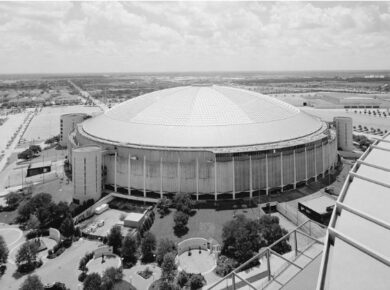German architect and structural engineer Frei Otto (born 31 May 1925) was well known for his pioneering innovations in lightweight and tensile structures. Shortly before his death in 2015 he was awarded the Pritzker Prize. Much of his research in lightweight structures is as relevant today as when he first proposed them over 60 years ago. His tension and membrane structures were not only beautiful, but also incredibly modern for his time, creating forms that were entirely new to the eye.

Image © Ingenhoven und Partner Architekten
Frei Otto had close and fruitful relationships with some of the leading engineers: Fred Severud, Ove Arup, Ted Happold, among others. It was through these friendships that he came to meet Walter Gropius on a trip to the US in 1950. Gropius came to regard Otto has a true successor of the experimental methodology of the Bauhaus movement because Otto “did not start from any formal approaches, but searched for the future architectural form through experiments.”

Image © Atelier Frei Otto Warmbronn
Tensile structure is the term usually used to refer to the construction of roofs using a membrane held in place on steel cables. Their main characteristics are the way in which they work under stress tensile, their ease of pre-fabrication, their ability to cover large spans, and their malleability. This structural system calls for a small amount of material thanks to the use of thin canvases, which when stretched using steel cables, create surfaces capable of overcoming the forces imposed upon them. (source: ArchDaily)

©Atelier Frei Otto Warmbronn
One of his most emblematic projects and a prime example of Otto’s ingenuity was the 1972 Olympic Stadium in Munich. It was a collaborative work with Gunther Behnisch that connected the park’s main programs – the natatorium, gymnasium and main stadium – with a whimsical, lightweight canopy structure that mimicked the “rhythmic protrusions” of the Swiss Alps.
About the Author:

Bruno Dursin – Managing Director at Believe in Steel. Bruno has more than 30 years of experience in promoting steel & steel solutions. His clients benefit from his extensive network within the building industry.



